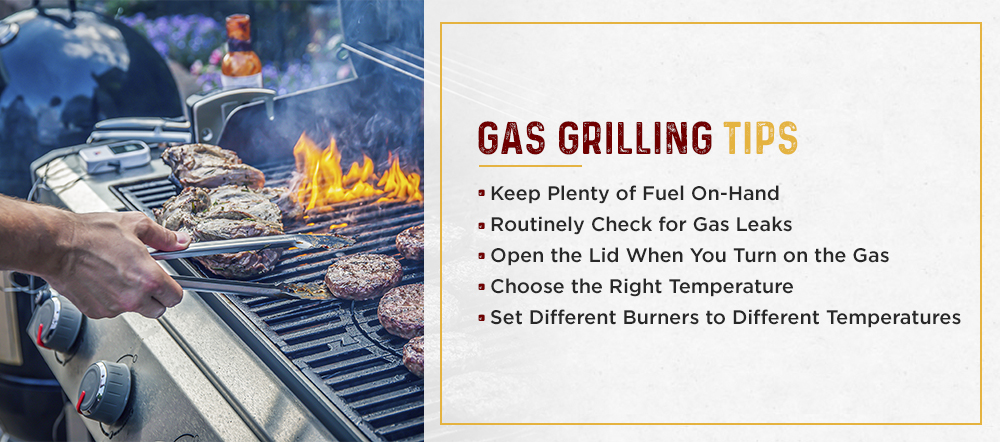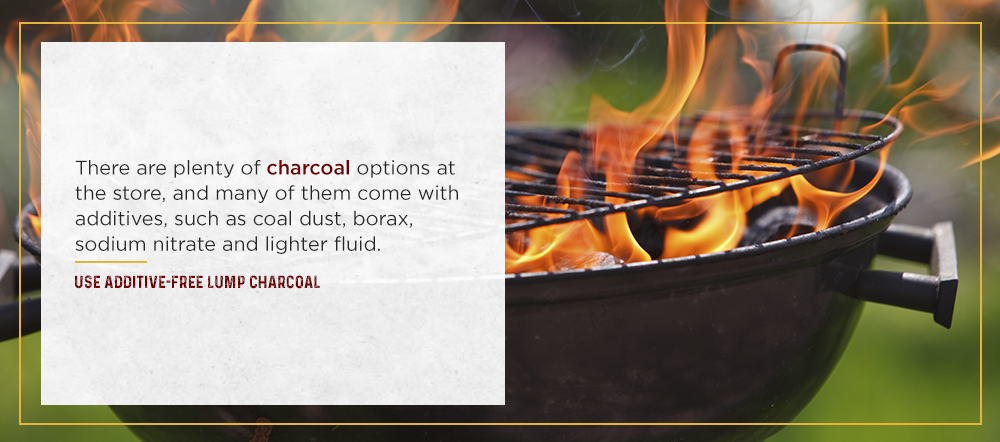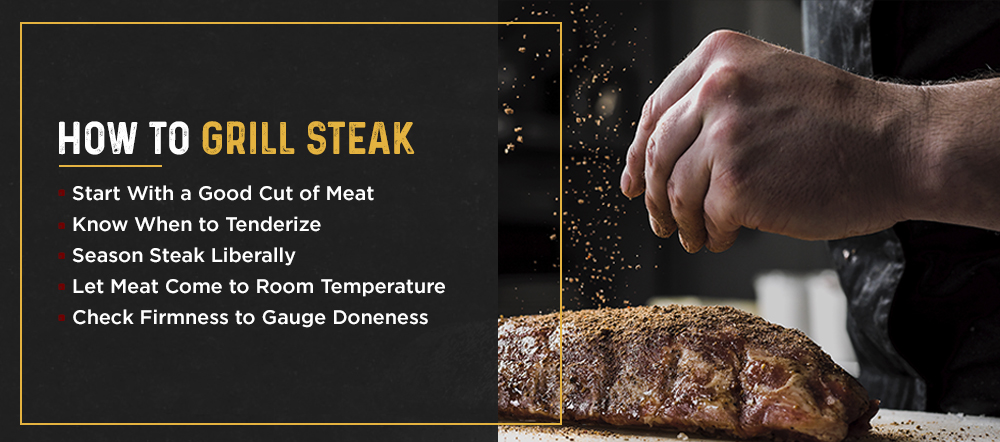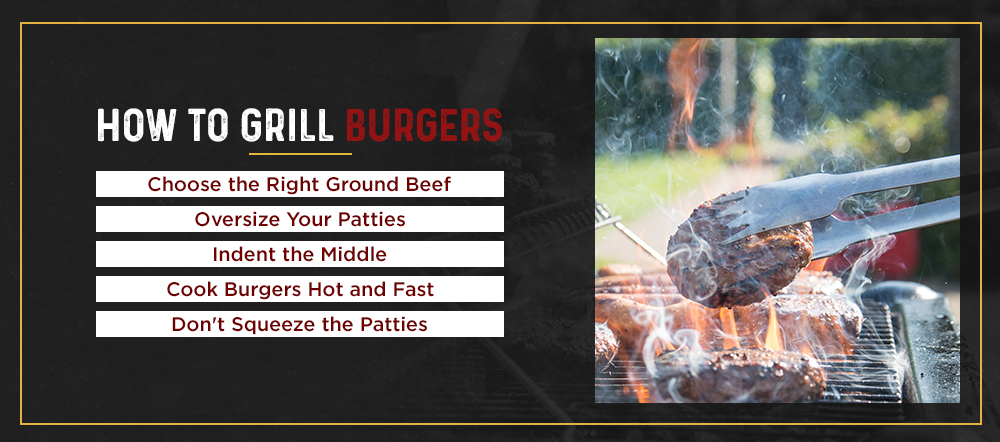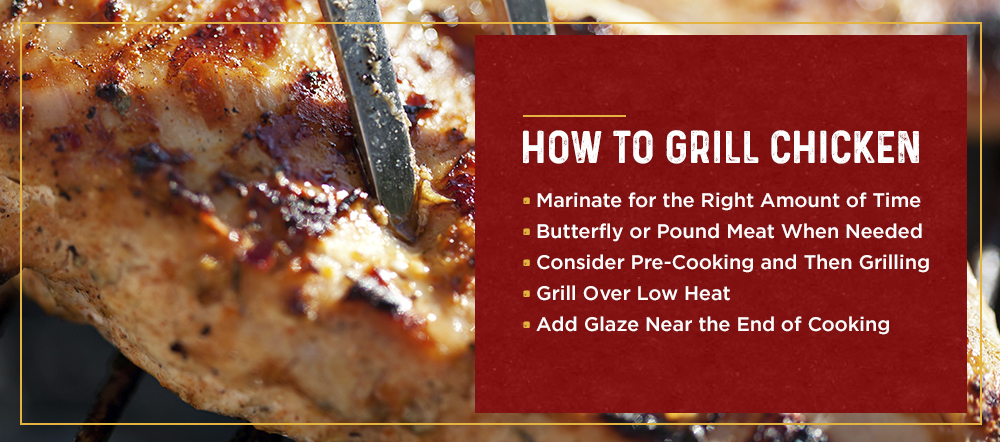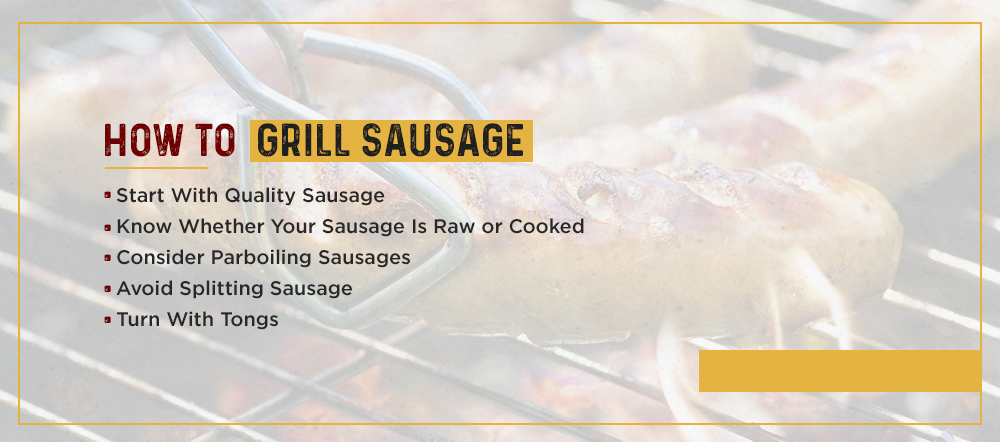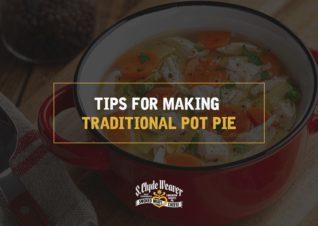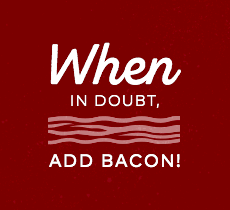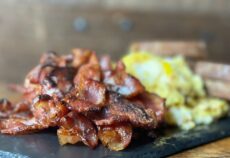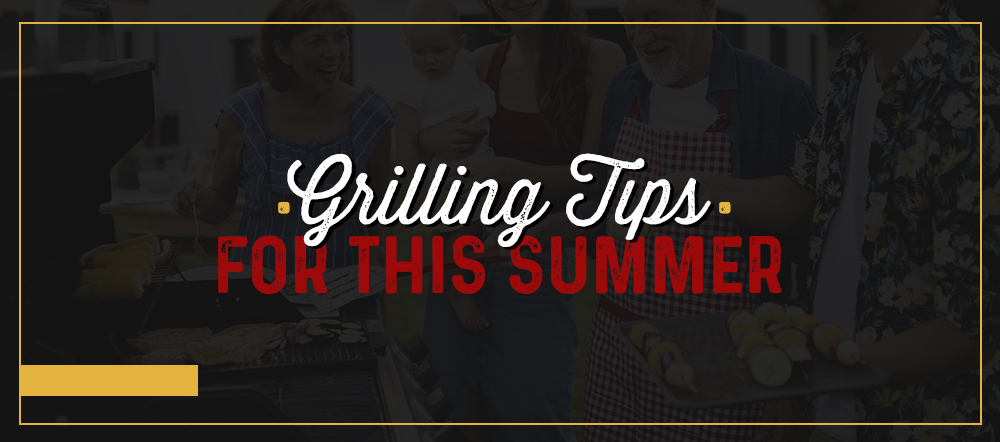
What would summer be without grilling out? There’s nothing like the delicious smells and, more importantly, the delicious tastes that come from grilling meat. If you’re planning to enjoy some grilling this summer, we have some important tips to help you stay safe and get some amazing results that will have your guests asking when the next cookout will be!
10 Quick Tips
Let’s start with 10 basic tips to help you grill like a pro this summer:
- Keep your grill clean: Built-up grease and bits of leftover food on your grill can interfere with flavor and lead to flare-ups. Use a grill brush to get your grill grates clean each time before you cook.
- Maintain a safe distance: You should position your grill at a safe distance from your house and other structures to prevent fire hazards. Most sources recommend at least 10 feet.
- Oil the rack: Lean meats can stick on a grill rack, so it’s best to oil the rack before cooking. Wait until the rack is hot, and then use tongs to rub a paper towel soaked with vegetable oil across the grates.
- Use your hand to gauge heat: You can hold your hand above the grill grate to detect how hot the grill is. If you feel the need to pull your hand away almost immediately, the grill is at high heat. The longer you can comfortably leave your hand, the lower the temperature.
- Don’t leave your grill unattended: One of the most important grilling safety tips is to stay nearby the grill at all times. This way, you can quickly address flare-ups or fires before they become bigger issues.
- Have a fire extinguisher nearby: Another way to maintain safety is to keep a fire extinguisher nearby so you can quickly access it and use it if you need to put out a fire. Of course, this will ruin your dinner, but it can stop a fire from getting out of hand.
- Don’t disturb the meat: Avoid scooting meat around, pressing on it or flipping it too much while it’s cooking. The best way to get a good sear and keep the juices inside is to leave the meat alone as much as possible.
- Make sure kabob pieces touch: If you’re grilling kabobs, make sure you place the pieces of meat and vegetables close together to lock in moisture rather than allowing the meat to dry out.
- Use a meat thermometer: There are various ways you can check for doneness, but a meat thermometer is always a reliable method to ensure your meat has reached the necessary internal temperature.
- Let meat rest: Always place meat on a cooling rack and allow it to rest several minutes before you dig in. If you cut into the meat too soon, the juices will run out, so the wait is worth it.
Gas Grilling Tips
Gas grills offer a convenient and controlled grilling experience. If you have a gas grill, make sure you follow these five tips this summer.
1. Keep Plenty of Fuel On-Hand
You never want to deal with the inconvenience of running out of fuel when you’re trying to grill, so it’s smart to keep plenty of fuel on hand. When your propane tank is getting low, make sure you fill it up so you don’t end up running out of gas when you’re going to fix the main course at your cookout or family dinner.
2. Routinely Check for Gas Leaks
With a gas grill, it’s important to check for gas leaks on a regular basis. You can do this by turning on the gas and coating the outsides of your hoses and connections in a solution of dish soap and water. You can also mix in some glycerin to make the bubbles last longer. Check to see if any bubbles appear on the soapy water. If so, that’s a sign that there are some small openings in the line that need to be repaired.
3. Open the Lid When You Turn on the Gas
Whenever you’re turning on a gas grill, make sure you have the lid open. Turning on the gas with the lid closed is dangerous because it traps gas inside, causing it to build up. If you opened the lid and lit the gas at that point, you would likely experience an explosion. Avoid this hazard by making sure the lid is open when you turn on the gas. Once food is cooking, you can close the lid as needed.
4. Choose the Right Temperature
One of the nice things about a gas grill is that you can control the temperature like you would on a stove. This isn’t always helpful, though, if you aren’t sure what temperature to set it to. In general, you want to use high heat to cook steaks, burgers and thin cuts of lamb and pork. Medium heat is best for fish and chicken. Use low heat for large cuts of meat you want to cook slowly over indirect heat.
5. Set Different Burners to Different Temperatures
In many cases, you can use direct heat to sear meat and use indirect heat to finish cooking more slowly. On a gas grill, you can set one burner on high and another on medium so you can use both as needed. This is also helpful if you’re dealing with flare-ups so you have a different area to move meat to until the flames die down so they don’t burn the outside of the meat.
Charcoal Grilling Tips
Grilling with charcoal delivers that signature grilled flavor, but it can be a bit tricky if you’ve never used charcoal before. Here are five tips to help you successfully grill with charcoal.
1. Use Additive-Free Lump Charcoal
There are plenty of charcoal options at the store, and many of them come with additives, such as coal dust, borax, sodium nitrate and lighter fluid. These additives can interfere with your food’s flavor and, in the case of lighter fluid, can produce volatile organic compounds (VOCs) that pollute the air. You can avoid these issues by purchasing additive-free lump charcoal, which consists only of charred wood.
2. Heat Charcoal With a Chimney Starter
You can avoid lighter fluid altogether when you use a chimney starter to preheat your charcoal. A chimney starter is a great investment if you own a charcoal grill. All you have to do is place the chimney starter on the lower grill grate, put some newspaper in the bottom, add your charcoal, light the paper and wait 15 to 20 minutes for the charcoal to get hot before pouring it out into the grill.
3. Wait Until All the Charcoal Has Ashed Over
When you’re preheating charcoal before cooking, it’s easy to get impatient. But you need to make sure you wait until your charcoal is completely ready before you start grilling. You can tell charcoal is ready once it is totally ashed over. This means the charcoal appears gray rather than black.
4. Create Direct and Indirect Heat Zones
Just like a gas grill, it’s smart to have different areas designated for direct and indirect cooking. With a charcoal grill, you don’t have burners you can adjust to different temperatures. Instead, you can pile up charcoal on one side of your grill. This is where you can do your cooking with direct heat. Leave the other area for when you need to move meat away from the direct heat to finish cooking or to avoid a flare-up.
5. Vent to Control the Heat
With a charcoal grill, you can use the vents to help you adjust the level of heat as needed. As you open vents, you invite more oxygen into the grill, fueling the fire and making it hotter. Trimming the vents will have the opposite effect, cooling the temperature of the grill. Just be sure not to close the vents entirely since this will put your fire out.
How to Grill Steak
Who can resist a juicy steak that’s been grilled to perfection with those beautiful grill marks? Some folks are intimidated by the idea of grilling steaks at home, but anyone can grill a steak successfully by following a few important guidelines.
1. Start With a Good Cut of Meat
There are a couple of important things to look for in a steak: tenderness and marbling. The filet mignon is famous for being exceptionally tender, but it’s also very lean, so the flavor is mild. The ribeye is not as tender, but it offers lots of marbling that makes this steak extremely flavorful. A New York Strip steak will give you a good compromise of tenderness and flavor. Study up on the different cuts of beef so you know what you’re looking at when you go to the grocery store or butcher.
2. Know When to Tenderize
Tougher steaks are still an option if you want to stick to more affordable cuts. If you choose a chuck steak, for example, you’ll want to tenderize it before cooking. You could use a meat mallet to beat the steak, breaking down the fibers. You could also use an acidic marinade or a meat tenderizer rub. These methods can greatly improve a tough cut of steak, but don’t use them on already-tender steaks — this can result in a mushy texture.
3. Season Steak Liberally
If you’re cooking thick steaks, you should err on the side of adding too much seasoning rather than skimping on it. This will impart the right amount of seasoning when you take a whole bite of the steak. There are endless options for steak dry rubs, but remember, the purpose of steak seasoning should be to highlight the steak’s natural flavor. You don’t need to overthink it. Salt and cracked black pepper make a no-fail rub for steak.
4. Let Meat Come to Room Temperature
Unless you like your steak rare, it’s best to let your raw steak come to room temperature before you put it on the grill. If the steak is cold when it hits the grill, it will take longer to reach your desired level of doneness. This isn’t just problematic for your patience. The longer the steak cooks, the tougher it becomes. This is why you want to cook a steak at a hot temperature and avoid leaving it on too long.
5. Check Firmness to Gauge Doneness
Steaks should cook fast and hot, so there is a narrow window when your steak is at the perfect doneness for your preference. There are many tricks out there for checking doneness. One simple method to try is to feel the muscle below your thumb on the palm of your hand. As you touch different fingers to your thumb, that spot will become firmer and correspond to the feeling of different levels of doneness, from rare to well done.
How to Grill Burgers
Burgers are the star of the show at many summer cookouts. Everyone has their favorite way to make burgers, but you may be making some common mistakes. Check out these important burger grilling tips.
1. Choose the Right Ground Beef
Assuming you’re using ground beef, it’s best to go with a fattier option. Lean ground beef can be dry when it’s cooked. Using ground sirloin, for instance, may seem higher quality, but it can give you a dry burger. Look at the lean-to-fat ratio on the package. According to the experts at Taste of Home, 70-30 is the perfect ratio for a juicy burger.
2. Oversize Your Patties
Remember that burgers shrink quite a bit as they cook. You want to make your patties larger than your buns so as they shrink they will become the perfect size. No one wants a slider-sized burger patty on a large roll.
3. Indent the Middle
As we’ll see, you shouldn’t press down on patties while they cook. Why do cooks do this sometimes? Usually, it’s to help flatten the patties, which have a tendency to puff up in the middle as they cook. You can avoid this problem by pressing an indentation into the middle of your raw patties before you put them on the grill. The middles will still puff up, but now the patties will be relatively flat. This can also help prevent shrinkage.
4. Cook Burgers Hot and Fast
Depending on the thickness of the burger, how done you want it and how hot your grill is, a burger can take anywhere from just a couple minutes to as much as 15 minutes to finish cooking. If you want your burgers to have a crisp outside and a juicy inside and don’t want to wait too long to dig in, it’s best to cook your burgers over high heat — as high as you can get it safely.
5. Don’t Squeeze the Patties
Many grillers are guilty of pressing down on their burgers with a spatula as they cook. The sizzle you hear when you do this is from the grease that squeezes out and burns up. You want to keep that fat inside the burger patties because, as we mentioned with steak, fat equals flavor. It also keeps your patties moist inside. If you squeeze fat out of your burgers, you’ll get a drier, less flavorful burger.
How to Grill Chicken
Grilled chicken is a delicious and lean entree for a summer meal. Let’s look at five important tips for grilling chicken so you can enjoy that delicious grilled taste and the perfect texture.
1. Marinate for the Right Amount of Time
Marinades are a great option for chicken since they impart tons of flavor. You’ll find countless marinade recipes online and lots of ready-made marinades in bottles so you can choose the flavors that go best with your meal and appeal to you. Make sure you let your chicken soak in the marinade for at least 30 minutes so it takes on the flavor. Since marinades with acidic ingredients also tenderize meat, you don’t want to leave the chicken too long. Cap it off at one to two hours.
2. Butterfly or Pound Meat When Needed
For thicker cuts of chicken, you have a few options. What you want to avoid is having to cook your chicken on the grill so long that it becomes tough and dry. One option is to pound the chicken down so it’s thinner and cooks through quicker. This is a good option for boneless chicken breasts, for example. You can also butterfly breasts to make them thinner.
3. Consider Pre-Cooking and Then Grilling
Another option for thicker pieces of chicken is to cook the chicken low and slow in the oven, then finish it off on the grill. This is a great option for whole chickens, split breasts and other bone-in sections of chicken that may dry out if you try to cook them start-to-finish on the grill. By choosing another cooking method, you can cook the chicken through and keep it moist, then put it on the grill just long enough to get that grilled flavor.
4. Grill Over Low Heat
Grilling chicken is very different from grilling steaks or burgers. Instead of high heat, opt for a lower level of heat. On a gas grill, you can set the burner to medium, or low if you’re grilling bone-in chicken. On a charcoal grill, cook chicken over indirect heat. If you try to cook chicken hot and fast, you’ll end up with charred skin and a dry texture.
5. Add Glaze Near the End of Cooking
In addition to marinating your chicken before cooking it, you can add more flavor near the end of cooking by basting or glazing. A barbecue or fruity glaze will caramelize on the surface of the chicken, giving it a great shine and delicious taste. Just be sure to wait until the last bit of cooking to glaze since the sugar in the glaze can burn if it’s on the grill too long.
How to Grill Sausage
Sausages, hot dogs and brats are great on the grill. There are many ways to enjoy grilled sausage. Serve them on a bun or roll, top them with condiments or toppings or simply eat them straight. Here are some tips for grilling sausage.
1. Start With Quality Sausage
Since there are so many types of sausage, each with their own seasonings and unique flavor, you want to start by choosing a great-quality sausage that is packed with delicious flavor. Even after you impart flavor through grilling, a bland or poor-quality sausage from the grocery store can be a lackluster entree at your cookout.
2. Know Whether Your Sausage Is Raw or Cooked
An important distinction between different types of sausage is whether they’ve been smoked or cooked before you buy them or if they come raw. If you’re starting with raw sausage, you need to make sure you cook it thoroughly to the necessary internal temperature so it is safe to eat. Pre-cooked sausages merely need to be heated throughout.
3. Consider Parboiling Sausages
A good option to consider, especially if you’re cooking raw sausage, is to start by parboiling it. This means plunging the sausages into boiling water for just long enough that the skin tightens and the fat begins to melt inside the sausage. Heating the sausage through before you grill allows you to shorten your cooking time on the grill so you end up with perfectly juicy sausages.
4. Avoid Splitting Sausage
You may have tried splitting sausages vertically and grilling them flat-side down. This is a faster method for grilling sausage, but when you don’t leave sausage casings intact, you’ll end up losing a good deal of the fat inside as it cooks. This means you’ll be left with less flavor than you would have had if you left the sausages whole.
5. Turn With Tongs
When you turn sausages on the grill, don’t pierce them with a fork. Poking holes in your sausage will let some of those delicious juices run out, causing your sausage to lose flavor and possibly flare-ups on the grill. Instead, use tongs to turn sausages without piercing them.
Delicious Lancaster Delicacies for Your Summer Cookout
If you want to wow your guests at your next cookout, stock up on delicious smoked meats, cheeses and other delicacies from S. Clyde Weaver. In our online store, you’ll find all sorts of delicious options, including hot dogs and sausages that are perfect for finishing on the grill.
Even an expert griller needs to start with quality products to create delicious grilled meals, so skip the typical grocery store products and try grilling something extraordinary from S. Clyde Weaver this summer.


